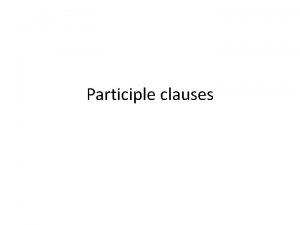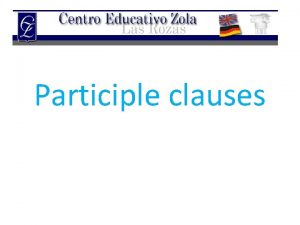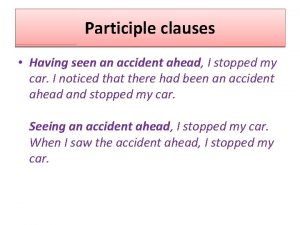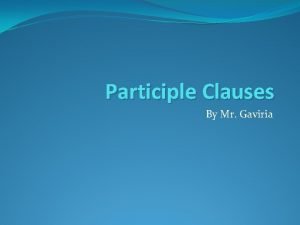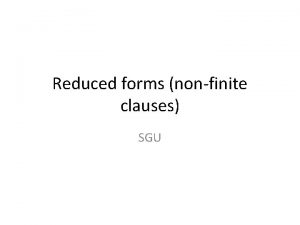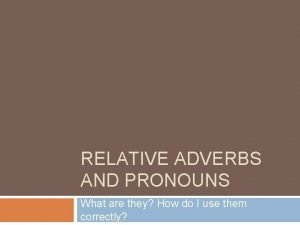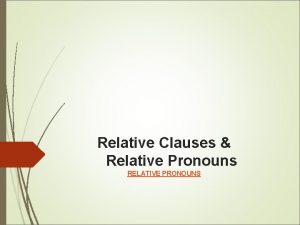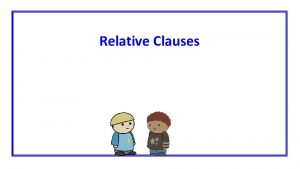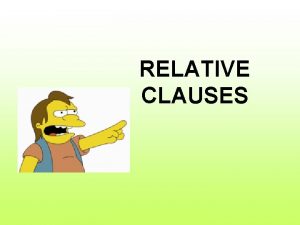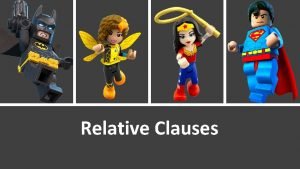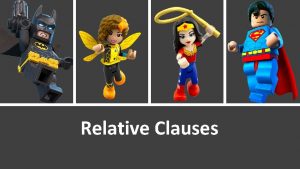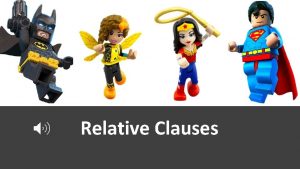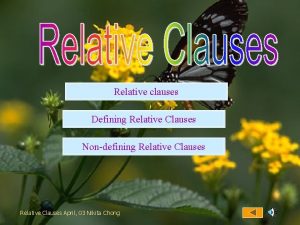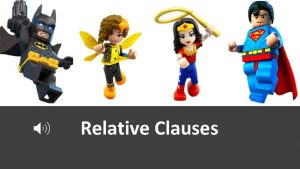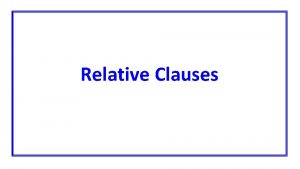Participle clauses used instead of full relative clauses













- Slides: 13

Participle clauses

• used instead of full relative clauses • the participle that introduces participle clauses can be: – –ing form (present participle) – –ed form (past participle) • not used instead with state verbs like know, think and have

present participle – replaces an active verb: • in the present (I need to get a message to someone getting on the plane. > who is getting) • in the past (John, worrying about his results, didn’t notice the teacher. > who was worrying)

past participle – replaces a passive verb: • in the present (Bags of rubbish left on the pavement are beginning to smell. > that are left) • in the past (Bags of rubbish left on the pavement began to smell. > that were left)

participles: – replace a relative pronoun when it refers to the subject, not the object • • John, who I was worrying about, didn’t notice the teacher. (John, I worrying about, didn’t. . . ) – replace that, which and who, but not when, where and whose • • The police stopped a small carrying ten people. > which/that was carrying – are preceded by ‘not’ if a relative clause includes a negative verb • John, not thinking about the results, concentrated on the lecture. > who didn’t think

Determiners

some and any: = a number/amount of before U nouns or plural C nouns some: in affirmative sentences or in questions when making an offer We’ve got some apples. Would you like some milk? any: in negative sentences and in questions They didn’t have any children. Are there any potatoes left?

much and many: = a large quantity in negatives and questions much: with U nouns Have you got much rice? many: with plural C nouns They didn’t have many children. a lot of: large quantities in affirmatives (but also negatives and questions) for C and U nouns He eats a lot of fish and vegetables.

most: = the majority of before U nouns or plural C nouns Most meat is eaten on Sundays. Most children go to church on Sundays.

a little and a few: = very small quantities in negatives and questions a little: with U nouns We only need a little pasta for the dinner. a few: with plural C nouns We bought a few vegetables on the market. little and few: without ‘a’ = gives a negative impression The concert was cancelled because only few people bought the tickets. There was little time to prepare, so we cancelled the event.

all and no: before U nouns or plural C verbs all can be used before ‘the’, with or without ‘of’ All (of (the)) dancers were very good. No tea or coffee was available.

each: = every single used before a singular noun She wore three earrings in each ear. every has a similar meaning to each My brother said that every festival he’s been to was great!

• Except for a lot of and all, the above listed determiners cannot be used immediately before an article, pronouns or determiner (e. g. a, an, the, my, your, this, those, you, them, etc. ), so we have to add OF: • Some of those people look very young. • • No cannot be followed by OF, so instead we use none. • No of my friends is here. >>> None of my friends are here. • • Every cannot be followed by OF. • Every of my brothers is a doctor.
 Participles instead of relative clauses
Participles instead of relative clauses Relative clause examples
Relative clause examples Participle clauses past
Participle clauses past Stage 15 relative clauses and relative pronouns
Stage 15 relative clauses and relative pronouns Types of relative clauses
Types of relative clauses Present participle
Present participle Participle clauses objasnjenje
Participle clauses objasnjenje Past participle of accident
Past participle of accident Participle clause
Participle clause 1. susan was lying in the sun. she got sunburned.
1. susan was lying in the sun. she got sunburned. Reduced participle clauses
Reduced participle clauses Joint frequency vs marginal frequency
Joint frequency vs marginal frequency Relative pronouns examples
Relative pronouns examples Ostiate
Ostiate
